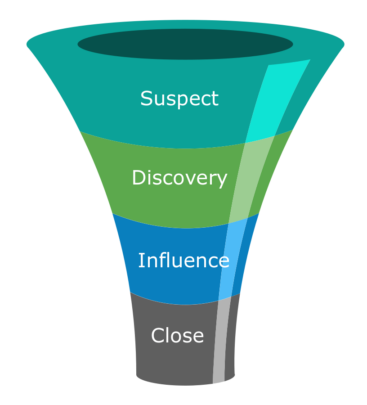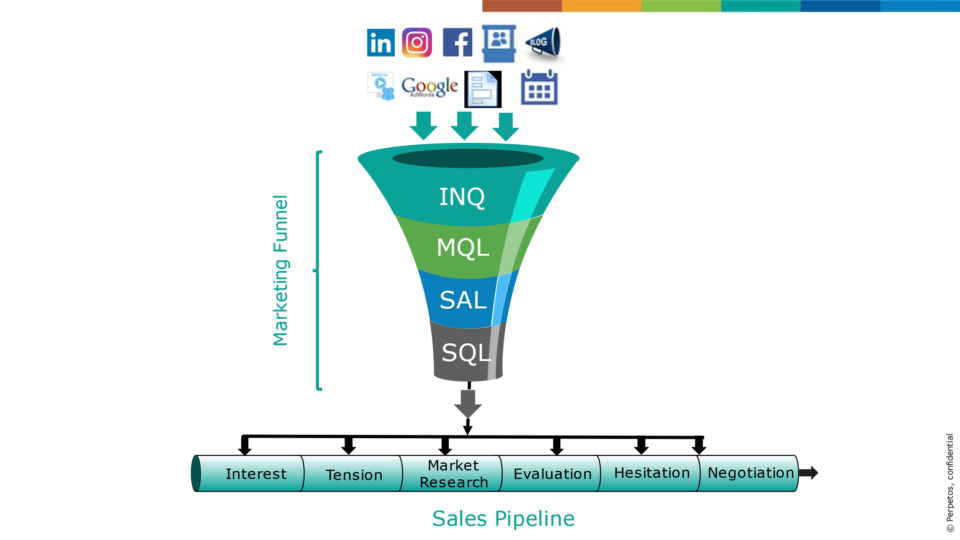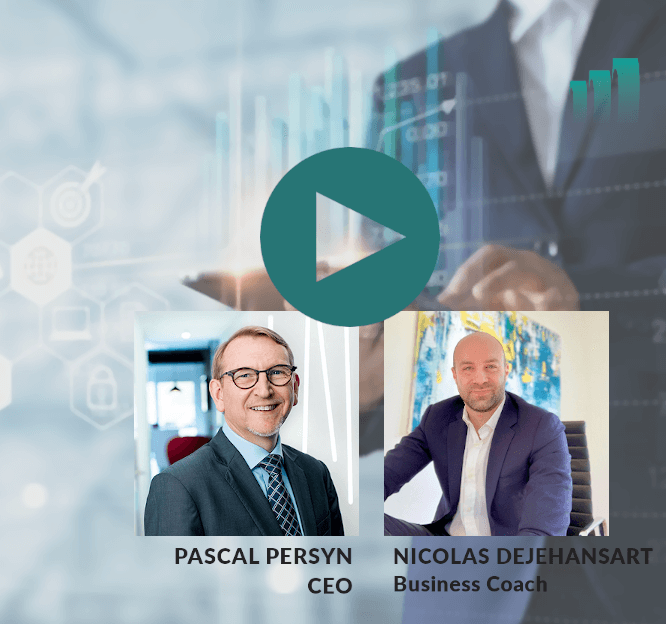Challenge: Identifying Lengthy Sales Cycles
Sales leaders in the tech industry can detect the challenge of longer sales cycles through a few key indicators within their organizations. This might manifest as an increasing time between initial customer contact and deal closure, a growing number of touchpoints or interactions needed before a sale is secured, or feedback from the sales team about the complexities and delays in customer decision-making processes. It’s often noticeable in the form of elongated negotiations, extended pilot programs, or increased requirements for technical validations.
Root Causes for Longer Sales Cycles
Several factors contribute to longer sales cycles in the tech sector:
- Complex Decision-Making Units: Tech purchases often involve a multitude of stakeholders, each with their own set of concerns and requirements. The decision-making unit may include IT professionals, end-users, financial controllers, and senior executives, each needing to be convinced of the problem, why it has to be solved now and how you are unique in solving their challenge.
- Complexity of Customer Problems: Customers are seeking solutions for increasingly complex problems, which require sophisticated and customized tech solutions. Understanding these complexities and tailoring the sales approach to address them specifically can extend the duration of the sales cycle.
- Budget Cycles and Financial Scrutiny: Given the significant investment often associated with technology solutions, purchases may be tied to customers’ fiscal planning cycles and subjected to rigorous financial scrutiny and require having everybody aligned on the necessity of the investment to be done
- Market Saturation and Competition: A crowded marketplace means that customers often have many options to consider, leading to a more extended comparison and evaluation phase.
- Regulatory and Compliance Issues: Especially in industries like healthcare or finance, sales are impacted by various regulatory and compliance requirements, which can further lengthen the sales process as these boxes need to be checked before a deal can progress.
Strategies to Anticipate and Navigate Longer Sales Cycles
To anticipate and effectively manage these extended sales cycles, consider the following strategic approaches:
- Align Sales and Marketing with Customer Buying Behaviors: Develop a sales and marketing strategy that is in lockstep with the customer’s buying behavior. This involves creating a common understanding of how your customers buy, what the right conversation should be with the different stakeholders, and which are the key touchpoints. The fact that every customer is unique in his or her behavior, you need a fuzzy logic approach that can align to each different situation. Creating the capabilities in your team for understanding where the potential customer is in their buying readiness is key. Utilize data analytics to predict when customers are most likely to engage, allowing sales teams to initiate the right conversations at the right time. Content marketing should be leveraged to educate and nurture leads throughout the buying process, providing them with the information they need when they need it, effectively shortening the sales cycle by aligning with their pace and progress.
- Facilitate Buying Committee Alignment: Since tech purchases often involve a committee, it’s essential to align your sales process with the various stages of their buying journey. This means understanding the unique concerns and criteria of each stakeholder and tailoring communication to address these points. Sales representatives should aim to facilitate consensus among the committee by identifying and addressing the specific needs of each member. This might involve creating tailored conversations, aligned messaging and facilitating workshops or demonstrations that address collective and individual concerns. All while maintaining open lines of communication to ensure that all members move through the buying process together.
- Simplify and Intuitize the Sales Approach: A complex sales process can be daunting for both the customer and the sales team. Streamlining the sales methodology to be simple and intuitive is critical. This can be achieved by using a simple metaphor that everybody can understand and that is easy to implement. It ideally outlines each step in the customer buying process, from initial issue awareness to post-sale follow-up.Training programs should focus on reinforcing these methods until they become second nature to the sales team. Additionally, employing tools such as CRM systems that provide prompts and reminders can help ensure that the sales methodology is consistently applied across all interactions.
By implementing these strategies, sales leaders in the tech industry can better prepare their teams to navigate the challenges of longer sales cycles, ultimately leading to more successful outcomes and sustained business growth.
A perfect way to handle these longer sales cycles, is with our Buying Clock®.
Read customer story.
Companies invest a lot of money in developing content that supports sales, but often see no return on their investment. The reason for this is that the sales organization does not use the developed content, or isn’t using it enough. So what’s going on?
The impact of content usage and, by extension, sales enablement has been demonstrated many times before. According to figures from Miller Heiman Group in 2019, organizations without sales enablement achieve average win rates of 42.5%, while organizations with sales enablement achieve an average win rate of 49.0%, a huge 15.3% increase.
Sales content is not marketing content
Content plays a crucial role in different phases of the buying cycle. It can accelerate the sales process and significantly reduce sales costs. But what exactly do we mean by sales content?

Content for:
- onboarding when launching new products or services
- important announcements with regard to the sales strategy
- preparing for customer contact moments
- during the contact moment
- follow-up after the contact moment
- training and coaching salespeople
Apparently, it turns out that salespeople don’t find enough of this kind of content in the materials produced by marketing departments. The reason for this comes from the purpose that marketing content serves, i.e. to influence the market based on its own strengths, and to lead as many interested parties as possible through the famous marketing funnel, with little variation in the message – ‘one-to-many communication’ – as quickly as possible, from awareness to buying intent.
Content that is developed for this purpose has some specific characteristics:
- the customer searches for and discovers the content under their own initiative (inbound marketing)
- the content reaches the customer online or via an automated process (outbound marketing)
- the effectiveness of the content is measured using KPIs such as clicks, reading time or number of shares
- the ultimate goal of the content is to generate Marketing Qualified Leads (MQL)
From funnel to unique journey
Many organizations still believe the MQL simply needs handing over to the salesperson who then just has an easy tap-in to score the goal. The customer has already passed through the entire marketing funnel, so all sales has to do is cash in on the marketing effort.
But this belief is – of course – misguided. The idea that a customer will dutifully go through a content funnel, and immediately be willing to buy at the end of that journey, is not the case in practice. Content is consumed for various reasons in this marketing funnel, and there are sure to be interested parties for your product, but people also download your ebook out of curiosity, or scroll through your website, to ultimately discover it’s not what they’re looking for. So who says your MQL has the required budget, or can make a decision or even influence it?
The marketing funnel in no way helps to predict the customer’s buying intent or willingness to buy. And it tells us little about which phase in the buying journey the customer finds themselves. The buying journey is therefore anything but linear, and it’s unique for each customer. When the salesperson starts working with an MQL, they always intervene at a different moment in the buying journey. And that requires specific content.

Sales content that works
It’s impossible for the marketing content mentioned above to satisfy the non-linear need. After all, marketing content is fundamentally different from sales content. The latter needs to support a salesperson before, during and after sales conversations. The customer does not consume it directly; they access it through personal interaction with the salesperson.
To increase the use of content in sales and so improve sales productivity, make sure your sales content has these characteristics:
- Snackable: short and powerful, simple to use and easy to understand
- Accessible and quickly findable, so salespeople can spend more time selling and less time searching for content
- Adapted to the customer’s mental stage in the buying journey
- Interactive: inviting participation and interaction
- Just in time: supportive for the salesperson in every phase – from preparing for the customer conversation, to interactions with the customer, and in the follow-up process
- Focused on action: usable, helpful and encouraging action.
Are you ready to get to work on your sales content strategy? Let us know!
In this article we will focus on commercial forecasting, i.e. we will look at unsigned orders and contracts. Sales forecasts are never easy. However, in uncertain times it’s no exaggeration to speak about “unpredictability”. This is certainly true if the following factors are combined:
- Project and/or recurring sales
- Direct and indirect sales, co-selling and working with agents
- Complexity of the deal (product mix, size,…)
- Buying cycle variety: number of people involved – buying experience,…
- Length of the selling cycle
- Experience of salespeople and their management
- Composition of the territory, regions and product mix per salesperson
- Market share, brand awareness and competitive strengths
A brief survey during our webinar has made it clear that when making their forecasts, enterprises mainly struggle with delays in making decisions and the reliability of data. This leads to all kinds of complex processes, Excel worksheets outside the scope of the CRM and uncertainties.
Fortunately, there are ways to drastically reduce this unpredictability and at the same time enable management to undertake action in time and proactively. This is even more important in uncertain times.
An “agile forecast” is best composed of:
- 3 parallel scenarios that allow an analysis of the frictions as well as timely decisions. These scenarios are typical: the worst possible result, the most realistic outcome and the scenario that is feasible with some luck.
- No targets and forecasts on the basis of the calendar year or the fiscal year. It’s preferable to work with a rolling forecast of four quarters. In other words, a new quarter is added after every quarter.
The combination of proper visibility and accuracy and the continuous improvement of the quality of your sales require a number of conditions or criteria to be met:
- The same mechanism should be used, from the individual salesperson up to management level
- There must be a constant visibility of 4 quarters
- Several parallel scenarios (as mentioned above)
- Use buying phases as a process rather than the salesperson’s selling phases. This is crucial as a solution for the continued delay in the decision-making process. More information can be found in the blog and the webinar about (CTA to blog 2)
- The criteria for the calculation of the scenarios must be based on verifiable customer information. A typical example: Has the budget been approved and is it available?
A forecast made in this manner has major permanent advantages:
- Better use of the selling time and support
- Maximum visibility, and the possibility to make adjustments in time…
- Less complexity thanks to the uniform process and way of working throughout the company and the avoidance of parallel work in CRM and Excel worksheets
- Continuous process that significantly simplifies the annual planning, while avoiding the complex quarterly business reviews (QBR).
- Uniform system that makes consolidation possible in spite of high diversity
The coaching and developing of sales talent is a major secondary effect of this way of working. Good salespeople will use this system for self-coaching and thus achieve even better results.
View the complete webinar for more detailed examples of this way of working.

[FREE WEBINAR]
Dealing with an unpredictable forecast
How to handle supporting, monitoring and coaching commercial employees
Quickly adding scenario’s in your reporting for better founded corporate decisions
Enable management to implement changes



 Luc Vanheule
Luc Vanheule
 Pascal Persyn
Pascal Persyn